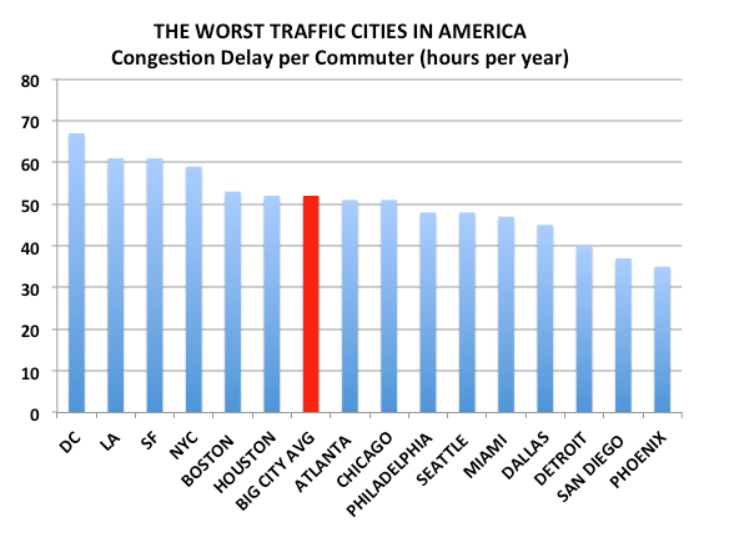Houston Scores high on America's Worst Traffic List. Inner Loop home values go up.
Posted by Surge Homes on

The average amount of time people spend stuck in traffic in the U.S. in cities such as San Antonio and Austin is about 38 hours each year. For Houston drivers, that number jumps to 52 hours annually, making the metro one of the most congested in the nation.
To illustrate the growing problem, here are a few statistics according to research from the TomTom Traffic Index:
- Houston is the most congested city in Texas, the 12th most congested city in the U.S., and ranks as the 85th most congested in the world.
- Amongst "big cities" in America, Houston is 6th for worst traffic, just behind Boston and New York City.
- Houston drivers with an average 30-minute commute can expect to spend an additional 22 minutes in traffic for each commute, which translates into an extra 85 hours annually.
- The biggest delays are on Tuesday mornings and Thursday afternoons.

As the transportation and government sectors hash out possible solutions to the growing problem of increased traffic congestion, Houstonians are looking for a way to get from home to work (or to school … or to anywhere) faster and more economically. After all, there’s a real hard cost to sitting in traffic: $818 annually on average, per commuter. As this Houston Business Journal article points out, “Houston’s traffic is getting worse.” Experts also predict that our city will continue to grow significantly in the coming years, making it easy to conclude that traffic problems will continue to magnify.
Unlike people living in New York or Montreal, Houston doesn’t operate mass transit, and the lack of transportation options only exacerbates Houston’s traffic problem. When you factor in the unpredictable fender-bender or the stalled vehicle, anyone driving along Beltway 8 or the other major highways during rush hour will undoubtedly be late for work or dinner on a regular basis.
Bad Traffic, Great Homes for Sale
One silver lining in the situation is that the traffic conundrum is fueling the demand for real estate located inside the Loop. When your journey begins by driving on the streets inside Highway 610, getting to neighborhoods such as The Heights, Midtown, the Museum District, Upper Kirby, University Place, etc. happens much quicker. Why? Because the traffic on these streets pales compared to the rest of the city, empowering homeowners to get where they want to be more efficiently and with less cost and stress. The same holds true for those who live inside the Loop and work outside Beltway 8: the reverse commute means they are driving against traffic, leaving the suburbanites to endure the starts-and-stops of congestion. Furthermore, scientists have discovered that the stress people experience with congested commutes is considerable. As this Time Magazine article points out, it is proven that the stress from sitting in traffic can raise blood pressure and cholesterol levels, increase anxiety, and cause depression.
For all of these reasons—and the fact that developers have homed in on the intrinsic value of offering townhomes, condominiums, and single-family homes for sale—there is a growing demand for new homes located inside the Loop. With demand, comes value, and in the world of residential real estate, location is a key driver. The more people want to live in a particular area, the more valuable the homes will be.
There are many reasons why buying a home makes smart economic sense. Purchasing a new home inside the Loop takes the advantage even one step further, leaving the traffic problem exactly where you want it: in your rearview mirror.

